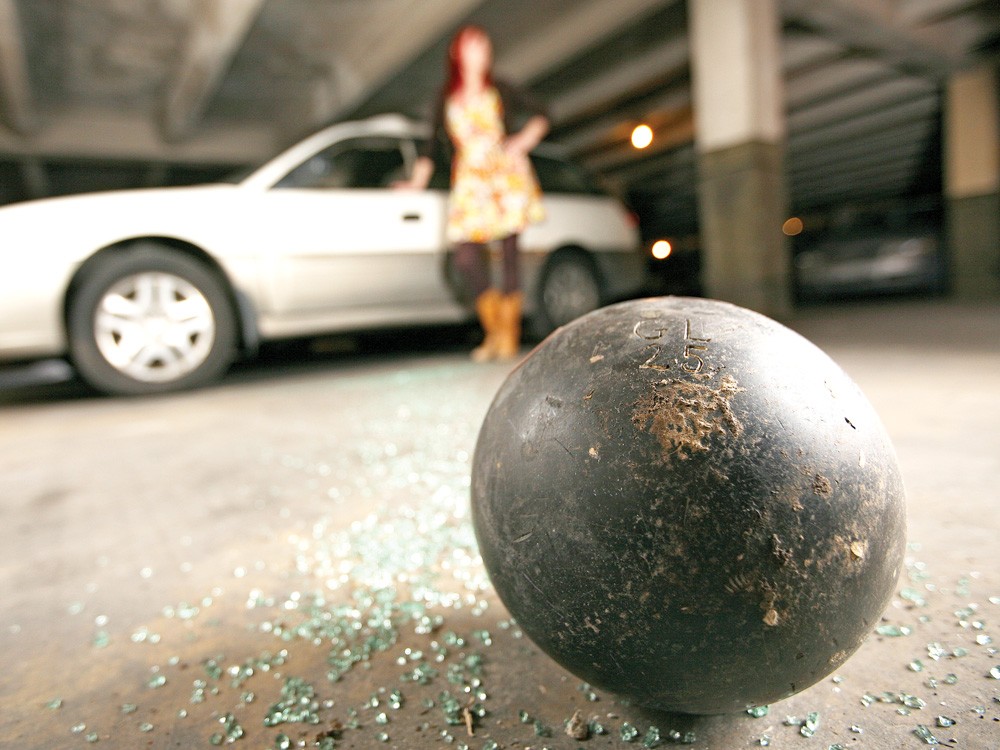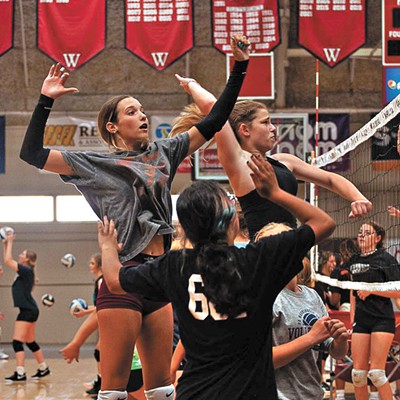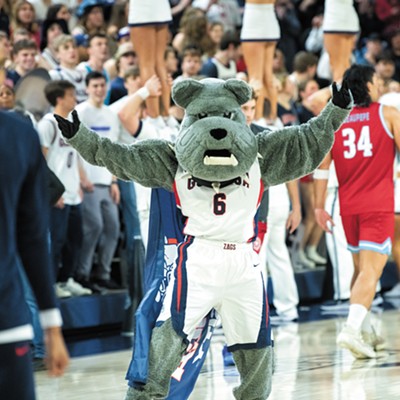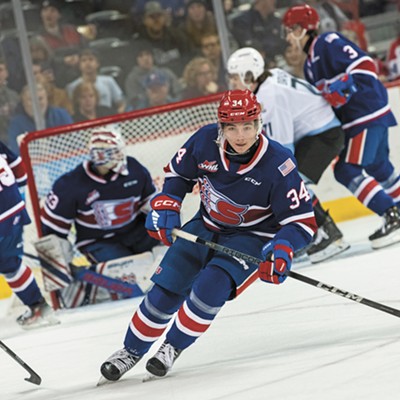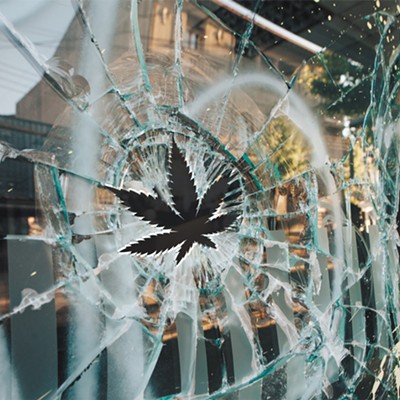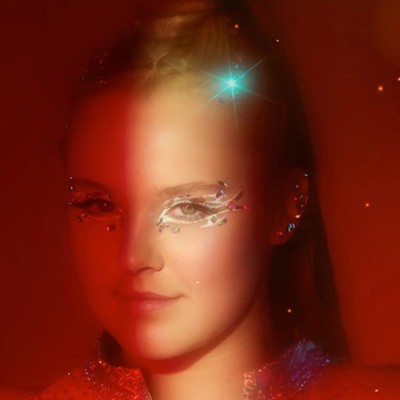It's a Friday afternoon in November, and I’m looking at the busted-out window of my Subaru station wagon, which I’d left in a subterranean parking garage next to the Inlander offices. The car is filled with glittering green safety glass. I’m looking at $200 worth of damage.
But I’m laughing my ass off. The thieves didn’t take anything besides a few disgusting, coffee-soaked pennies, but they did leave something behind: Winona.
That’s the name I would end up giving to the 16-pound thing sitting in my passenger seat. It resembles a bowling ball in shape, but its black surface is dull and covered in scuffs and scratches. And instead of the three holes common to bowling balls, there are only two — some sort of plate covers the third. The figure “GL 25” has been engraved shallowly into its surface. Is it a bowling ball? Maybe a wrecking ball?
I needed answers.
I show up at North Bowl’s pro shop on a Thursday night. The man who runs the shop, Dan Kukuk, has 50 years of experience, I’m told. He might know something.
I try to explain the circumstances that led me to him, but I can tell I’m not making much sense. So I abandon the long story and opt for the short.
“Can you just tell me if this is a bowling ball?” I ask.
I set the heavy bag on a table and pull the cloth away. The confusion on his face gives way to shock.
“The things I could tell you about this ball…” he says, his eyes fixated.
“Garden Lanes,” Kukuk continues, as he runs his fingers over the “GL 25” inscription. It was a bowling alley on Sprague Avenue. It burned down in the ’60s but, before that, it was where, at age 8, he first went bowling, a hobby that would take him on to win PBA tournaments.
Winona was a house ball there, he says — No. 25.
He identifies her as a Brunswick Mineralite — the first series of balls ever to be made from rubber instead of wood. He believes she was manufactured as early as the 1920s, which would explain the two holes. Back then, that was standard for bowling balls.
“Unbelievable is what it is,” says Kukuk, before he carries her over to his friends — other long-time bowlers. They all mutter the words “Garden Lanes” when they lay eyes upon her.
“If it could talk…” begins one. “Oh, the stories it could tell,” finishes another.
Over the next few days, Kathy Schilling, president of the Spokane County chapter of the United States Bowling Congress, takes me around to meet some of her bowling connections as we try to piece together more of Winona’s story. We meet a guy at Valley Bowl who takes a knife to her holes, confirming she’s made of rubber (and, strangely, upsetting me a little). A 70-year-old guy at Lilac Lanes points out a worn ring around the ball, suggesting that whoever used it threw with a spinning motion, meaning that at some point Winona went from being a house ball to someone’s personal property.
Each bowler winds up asking the same question: How did the ball get from Garden Lanes to my car window? Where had it been?
I realize no one had told me where the alley had been located, other than that it had been on Sprague Avenue. So I ask local historian William Stimson.
He just laughs at me: “It’s right behind you.”
"It was initially built by someone else as a lovely dance hall,” says Mrs. Jean L. Beschel, 80, whose family has owned the building at 333 W. Sprague Avenue, adjoining the Inlander offices, since 1920. It was the kind of place “where a husband would take his wife. … We’re talking about a beautiful evening in which you’d say, ‘Shall we celebrate our anniversary, my dear?’” Beschel says there was a ladies lounge upstairs, from which the women would descend to the dance floor. (I had even heard in my research that it had been a favorite hangout for Bing Crosby.)
“The ’30s came and went. The war came along, and it could no longer hold its own,” says Beschel. “At that time, my father converted it into a bowling alley.”
It stayed that way, says Beschel, until World War II was over and there were no longer sailors and soldiers to patronize the lanes. Then, perhaps after a fire, it became a parking garage.
The parking garage. Beschel says it took a long time to get rid of the bowling equipment, but they eventually did. Except, apparently, for Winona.
Knowing the building’s past, I return to the garage. I’m shocked at how much I’d missed before.
On the door to a staircase near where my car had been parked, the words “TO LANES MAIN FLOOR” are painted. At the top of those stairs, in the upper parking level, there is an old sticker that says, “I’m a member… Spokane Men’s Bowling Association,” with a cartoon man squinting over a ball.
In the back of the upper floor, where the dilapidated suspended ceiling ends, I look up to the original ceiling, painted with a bright, once-elegant design.
The walls, now dirty, show a matching faded image.
It makes me wonder how much I miss every day, especially in a city so rich in history.
Winona represents a piece of that history that I would have continued to miss, had she not found me first.
Do you know anything about Garden Lanes or Winona? Email [email protected].

